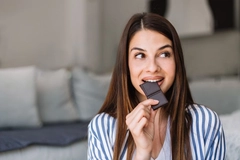“Exorbitant” amount of alcohol, junk food on reality TV poses concerns, warn researchers

06 May 2022 --- Oxford University Press has published a paper revealing that exorbitant depictions of alcohol, tobacco and high-fat, sugar and salt foods (HFSS) feature prominently on reality television programs and are frequently shown.
More depictions were observed on television than via Netflix, although there was no significant difference in the case of alcohol content itself.
Barbara Crowther, coordinator of Children’s Food Campaign for Sustain, tells NutritionInsight that unhealthy food and drink brands featured in 88% of all the reality TV show episodes the researchers studied
She argues that this evidences “how normalized junk food consumption has become in the UK.”
“The government has now regulated to restrict paid-for advertising of food and drink high in HFSS on TV before 9 pm and a total ban online,” she explains. “But if these same products continue to feature so regularly within programming itself, there is a risk that the positive impact of the new laws could be undermined.”
Ofcom code isn’t enough
While regulatory controls currently exist around depictions of alcohol and tobacco, they are still commonly depicted on prime-time television programs. This could indicate stricter regulatory controls and enforcement are necessary.
 Barker and Crowther say the Ofcom broadcasting code does not do enough to protect young viewers.Prior studies have indicated that exposure to HFSS foods via media can heighten the risk of smoking, alcohol consumption and unhealthy diet habits in young people.
Barker and Crowther say the Ofcom broadcasting code does not do enough to protect young viewers.Prior studies have indicated that exposure to HFSS foods via media can heighten the risk of smoking, alcohol consumption and unhealthy diet habits in young people.
The paper’s lead author Alexander Barker tells NutritionInsight that depicting such brands on television programs can function as a form of advertising: “Who needs TV advertisements when you can expose audiences to brands through program content?”
In the UK, brands shown on TV are regulated by the Ofcom Broadcasting Code. Barker says the code is designed to protect children from potentially harmful content. “Our study shows that this is currently not working and needs to be more strictly enforced. The loopholes around branding also need closing to prevent regulations being circumvented.”
“The code prohibits paid for product placement of alcohol brands, however brands can be used if they’re acquired at no cost. I think this is a loophole as we saw specific brands receiving a lot of exposure through these programmes. For example 14 bottles of Johnnie walker in one scene of made in Chelsea,” says Barker.
“Legislation has just been passed in the UK to prohibit HFSS advertisements before the 9 pm watershed. This research potentially identifies a loophole in this as HFSS brands featured heavily in programmes.”
“If the current rules are failing to prevent products like Coca Cola, Pringles and Walker’s Crisps from featuring in reality TV shows, then the government should review the evidence again, and seek to strengthen these regulations too,” implores Crowther.
In an assessment of 20 English language reality television shows which aired between 2019 and 2020, researchers measured the number of one-minute spans of time where programs showed tobacco, alcohol and unhealthy foods. The researchers found that alcohol showed up in 39% of these intervals in 98% of episodes.
Peroni most common alcohol brand
Researchers noted the branded alcohol appeared in 46% of episodes. A total of 149 brands were shown with Peroni being the most common, appearing 101 times. Meanwhile, high-fat and high-sugar foods showed up in 13% of these intervals in 88% of episodes studied.
The results were contrasted with a sub-sample of 15 television series and viewership statistics, estimating that said series delivered up to 157.4 million tobacco, 3.5 billion alcohol and 1.9 billion HFSS depictions to UK viewers.
Significantly more intervals containing alcohol and junk food were seen in UK programs compared to reality shows made in the US or Australia.
Corrupted youth
While children are generally not the target demographic for most reality television programs, young people are a major portion of viewership.
According to Barker: “There’s strong evidence that exposure to this content leads to uptake in young people. Social Learning theory posits that people copy the behavior of influential others, due to the nature of reality TV, with its inspirational role models, it is likely influencing drinking in young people.”
Crowther echoes his sentiment: “Young people report the constant stream of product and brand marketing wherever they go – on TV, online, on social media, outdoors, in the cinema, at sports events, via celebrity endorsements, within apps and gaming, and it’s time that healthier products were given the spotlight instead.”
By Olivia Nelson












